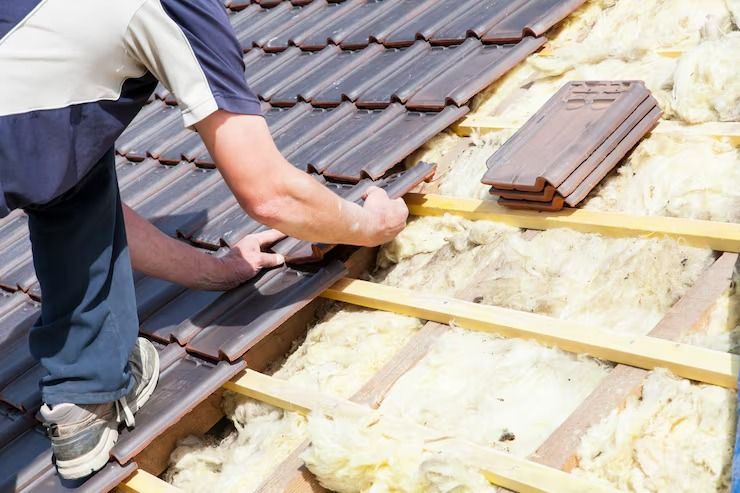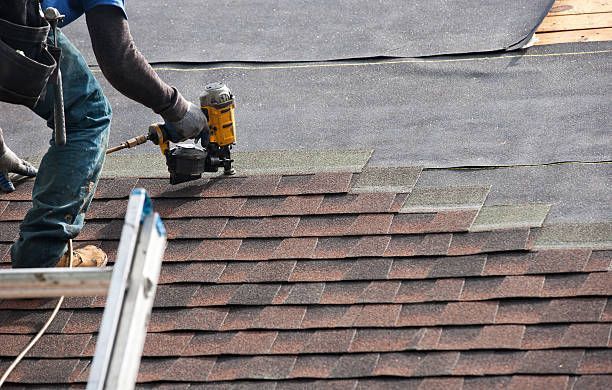Roof Replacement Simplified with a Skilled Contractor
Roof Replacement Simplified with a Skilled Contractor
A roof is one of the most critical components of any home, protecting it from weather, ensuring energy efficiency, and enhancing its aesthetic appeal. However, when a roof reaches the end of its lifespan or sustains significant damage, a proper replacement becomes necessary. Working with a skilled contractor simplifies the process, ensuring quality workmanship, timely completion, and compliance with building standards.
Custom home builders often incorporate advanced materials and personalized designs to meet specific homeowner needs, making professional guidance essential. Engaging experienced contractors helps homeowners avoid common mistakes, minimize costs, and achieve a durable, visually appealing roof. Understanding the process of roof replacement and the benefits of professional support ensures a smoother experience from start to finish.

Assessing Your Roof’s Condition
The first step in any roof replacement project is a thorough assessment of the existing structure. This involves inspecting shingles, flashing, gutters, and the underlying roof deck for signs of damage or deterioration. A skilled contractor evaluates both visible and hidden issues, such as water damage, rot, or weakened support beams, which may not be immediately obvious. For homeowners working with custom home builders, this assessment also considers design plans and material choices that align with the overall architectural vision. Proper evaluation ensures that the replacement addresses all current problems and prevents future complications.
Skipping this step can lead to incomplete repairs or recurring issues, which may compromise the safety and longevity of the new roof. Experienced contractors use specialized tools and techniques to detect subtle issues, providing homeowners with a detailed report and recommendations. By understanding the full scope of the roof’s condition, property owners can make informed decisions, plan their budget, and schedule the project efficiently. A comprehensive assessment sets the foundation for a successful roof replacement, ensuring structural integrity, aesthetic harmony, and long-term durability.
Choosing the Right Materials
Selecting the proper roofing materials is crucial for durability, performance, and visual appeal. Custom home builders often incorporate materials that match the design aesthetic while meeting local climate requirements. Options range from asphalt shingles and metal roofing to slate, tile, or synthetic composites, each offering unique benefits. A skilled contractor guides homeowners in choosing materials that provide optimal weather resistance, longevity, and energy efficiency. Factors like wind resistance, fire rating, and maintenance requirements are carefully considered to ensure the roof performs well under varying conditions.
Material choice also affects cost, installation complexity, and long-term maintenance needs, making professional guidance essential. Experienced contractors help balance functionality, budget, and style, ensuring the selected material complements the home’s architecture while meeting performance expectations. Additionally, understanding material warranties and proper installation procedures reduces the risk of premature failure or damage. Choosing the right materials with a contractor’s input ensures a roof that not only protects the home but also enhances its value, curb appeal, and energy efficiency.
Planning the Replacement Process
A well-structured plan is essential for a smooth roof replacement. Contractors coordinate every stage of the project, including material delivery, removal of the old roof, structural repairs, installation of new components, and final inspections. For homes built with custom home builders, planning also ensures that the roof aligns with architectural features, interior layouts, and exterior aesthetics. Experienced contractors create timelines that account for weather conditions, workforce availability, and any special requirements related to the home’s design.
Planning also includes safety measures to protect workers, property, and landscaping during construction. Clear communication between the homeowner and contractor prevents misunderstandings and ensures all expectations are met. Detailed planning minimizes delays, reduces additional costs, and provides a roadmap for quality assurance. By approaching roof replacement with a strategic plan, homeowners experience less stress, smoother coordination, and greater confidence in the final outcome. Professional project management also allows for efficient problem-solving if unexpected issues arise, keeping the replacement on schedule and within budget.
Removing the Old Roof
Proper removal of the existing roof is a critical step that ensures the new roof is installed on a solid foundation. Skilled contractors carefully strip away old shingles, underlayment, and damaged components while protecting the underlying deck. For homes built with custom home builders, removal may involve navigating unique roof designs, multiple layers, or specialized features like dormers, skylights, or vents. Contractors dispose of old materials safely, adhering to local regulations and minimizing environmental impact. Improper removal can result in damage to the roof deck, structural components, or interior of the home, potentially leading to costly repairs.
Experienced teams work methodically to prevent hazards, manage debris efficiently, and maintain a clean worksite. This step also provides an opportunity to identify hidden damage, such as water intrusion or weakened supports, that could compromise the new roof if left unaddressed. By entrusting removal to skilled professionals, homeowners ensure the replacement process starts on a solid, prepared foundation, contributing to a long-lasting, durable roof.
Installing the New Roof
Installation is the most visible phase of roof replacement, where expertise and precision are critical. Contractors follow manufacturer guidelines and industry standards to ensure the roof is installed correctly and performs as intended. Custom home builders may incorporate specific design elements, materials, or structural enhancements that require careful attention during installation. Skilled roofing teams manage tasks such as laying underlayment, securing shingles or panels, installing flashing and vents, and ensuring proper drainage. Attention to detail prevents leaks, reduces wear over time, and enhances the roof’s overall performance.
A professional installation also considers insulation, ventilation, and energy efficiency, which can lower utility costs and improve indoor comfort. Experienced contractors use specialized tools and techniques to handle steep pitches, complex layouts, or intricate roofing features safely and efficiently. Proper installation not only protects the home but also maintains the architectural integrity envisioned by the custom home builder. A high-quality installation ensures the roof remains durable, functional, and visually appealing for decades.
Ensuring Proper Ventilation
Proper ventilation is a critical component of roof performance that impacts energy efficiency, indoor comfort, and the longevity of materials. A skilled contractor evaluates the attic space, roof design, and local climate to determine optimal ventilation strategies. Custom home builders often incorporate specific architectural features that influence airflow, requiring careful planning during roof replacement. Adequate ventilation prevents moisture buildup, reduces the risk of mold or rot, and helps maintain consistent indoor temperatures. It also protects shingles or roofing panels from excessive heat, which can shorten their lifespan. Contractors may install ridge vents, soffit vents, or mechanical ventilation systems depending on the structure’s needs.
Poor ventilation can lead to energy inefficiency, premature aging of roofing materials, and structural damage, emphasizing the importance of professional planning. By addressing ventilation correctly during replacement, homeowners achieve a balanced and healthy indoor environment, extend the life of their new roof, and maintain the aesthetic integrity of their home. Skilled contractors ensure all components work together seamlessly, combining performance, durability, and design.
Weatherproofing and Insulation
Weatherproofing is essential to protect a home from wind, rain, hail, and temperature extremes. Contractors apply high-quality underlayment, sealants, and flashing to safeguard the roof deck and prevent leaks. For homes designed by custom home builders, weatherproofing strategies are often tailored to the roof’s slope, materials, and design features. Proper insulation also plays a critical role, reducing heat transfer, minimizing energy costs, and improving comfort indoors. Contractors assess insulation needs based on climate, building codes, and material specifications, ensuring optimal performance.
Weatherproofing and insulation work together to extend the roof’s lifespan, reduce maintenance costs, and prevent structural damage caused by moisture or temperature fluctuations. Skilled contractors inspect each component to verify proper installation, addressing potential weak points that could compromise protection. By combining weatherproofing and insulation during roof replacement, homeowners gain peace of mind knowing their home is secure, energy-efficient, and comfortable year-round. This proactive approach helps prevent future repairs and enhances the overall value of the property.
Final Inspection and Quality Check
After the new roof is installed, a comprehensive inspection ensures that all aspects meet professional standards and homeowner expectations. Contractors check for proper alignment, secure fastening of materials, correct installation of flashing and vents, and adequate sealing to prevent leaks. Custom home builders may have unique design elements that require additional scrutiny to ensure they are integrated correctly and aesthetically pleasing. Inspections also verify compliance with local building codes and manufacturer guidelines, which is essential for warranty coverage.
Contractors address any minor adjustments or corrections before completing the project, ensuring a flawless finish. Quality checks provide homeowners with confidence that their investment is protected and that the new roof will perform reliably for years. By conducting thorough final inspections, skilled contractors demonstrate their commitment to craftsmanship, safety, and customer satisfaction. A rigorous quality check also reduces the likelihood of future maintenance issues, protecting both the home and the homeowner’s peace of mind.
Conclusion
Replacing a roof is a major home improvement project, but working with a skilled roofing contractor makes the process simple, efficient, and reliable. From inspecting your existing roof and choosing the best materials to proper installation, ventilation, insulation, and final inspection, professional guidance ensures quality and peace of mind. Experienced contractors handle every detail to make sure your roof is durable, safe, and compliant with building standards. Homeowners in West Chester, PA can rely on Spring Valley Roofing for expert roof replacement services and personalized solutions. Contact us today at 1 (610) 827-5666 or visit us at 2 W Market St, West Chester, PA 19382 to schedule a consultation. Let us help you protect your home, enhance its value, and enjoy a long-lasting, beautiful roof.



